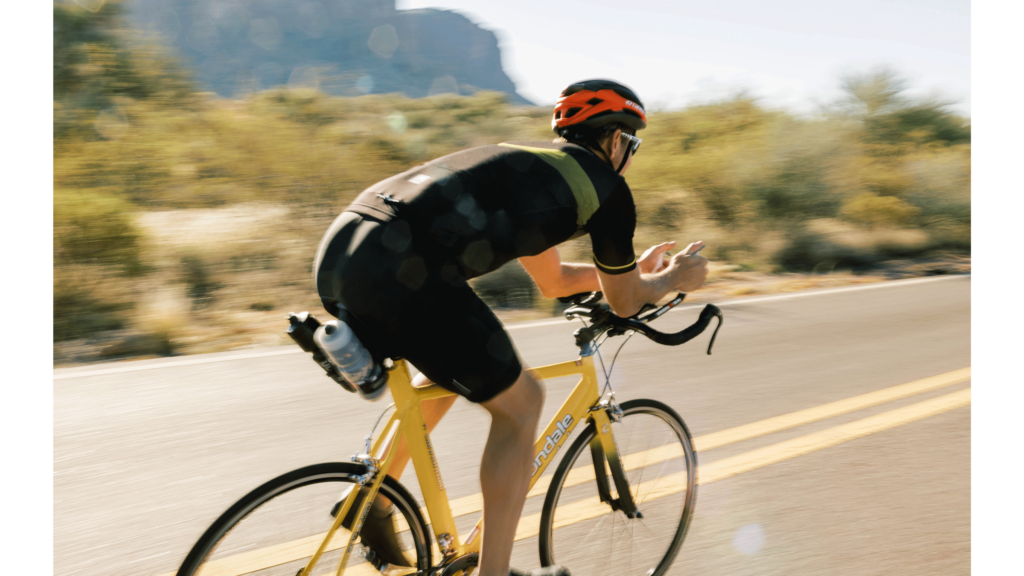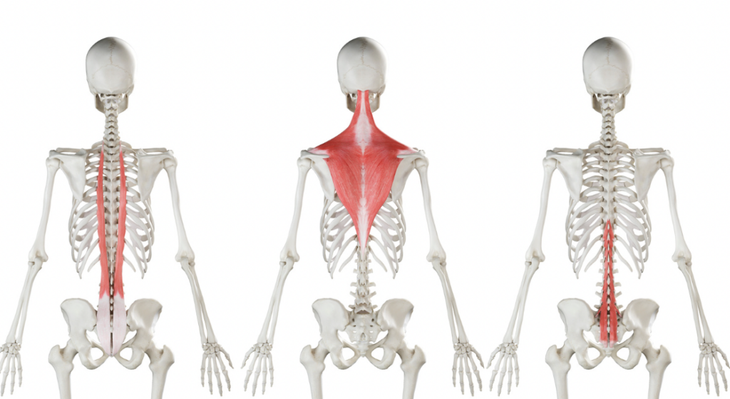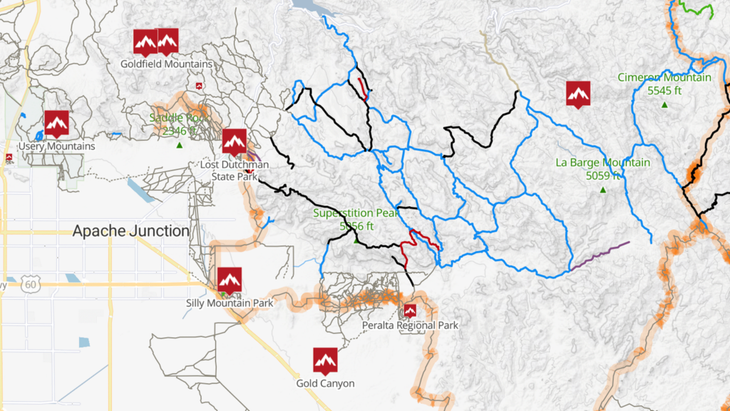
“], “filter”: { “nextExceptions”: “img, blockquote, div”, “nextContainsExceptions”: “img, blockquote, a.btn, a.o-button”} }”>
Heading out the door? Read this article on the new Outside+ app available now on iOS devices for members!
>”,”name”:”in-content-cta”,”type”:”link”}}”>Download the app.
You already know there are stretches for cyclists that can bring relief to your overtaxed hip flexors, hamstrings, and calves and assist in your recovery and performance. (Whether you practice them is an entirely different matter.) But you may not be aware that there’s an entirely different style of stretching that you’re probably overlooking.
During a long training ride, your hips are in a prolonged state of flexion, your spine is in a perpetual rounded state, and your chest and arms are crowded over your handlebars. That’s a lot of forward bending.
That prolonged spinal flexion lengthens the muscles along your back and keeps your chest muscles shortened and contracted. The one exception occurs in your neck, which hinges sharply in the opposite direction so you can see the road ahead.
What you need are exercises that rebalance the muscular patterns you’ve developed on your bike. These exercises need to stretch the front body (your hip flexor, abdominal, and chest muscles) that are chronically shortened. They also need to strengthen those underutilized muscles running along either side of the spine and in between the shoulder blades (namely, the erectors, rhomboids, trapezius, and posterior deltoids). In other words, you need exercises that will effectively lengthen the chest muscles that cycling shortens and shorten the back muscles that cycling lengthens.

(Illustrations: Sebastian Kaulitzki Science Photo Library | Getty)
The Best Stretches for Cyclists
These stretches are known as backbends. But not all backbends deliver equal benefits.
The most challenging backbends might seem, at first glance, like the strongest and most efficient answer. More is better, right?
But they’re less helpful than you’d expect. Many of the most extreme and Instagrammable backbends demand a range of motion that the average cyclist doesn’t have and doesn’t need. Even if you can come into an intense pose such as Upward-Facing Dog or Upward-Facing Bow, the benefits to cyclists are minimal. These backbends rely on your already powerful glutes or your upper arm strength to initiate the bend in your back. That means they allow the muscles along your back to remain passive rather than help you build the strength you need.
But there is one backbend that allows you to maximize efficiency by both stretching and strengthening in all the ways you need. It forces the muscles along your spine to activate, isn’t gratuitously intense, and brings a stretch to your front body. It also, coincidentally, helps lengthen those tight hip flexors and can even do something about your stiff neck.
It’s called Locust Pose (Salabhasana).

How to Practice the Best Stretch for Cyclists
The following stretching and strengthening exercise is deceptively simple. You start in a fairly neutral position, face-down on the ground, which in itself is a subtle backbend that can bring relief to an aching lumber region. Then you engage every muscle along your back body to lift your head, shoulders, arms, feet, and legs off the ground. It may look easy although it feels anything but that.
The most relevant thing to remember is your goal is not to make the biggest backbend you can muster or force yourself to do it a manic number of reps. Your strength and endurance on the bike aren’t the result of a single ride. They developed slowly and surely over time. The same approach applies to rebalancing the forward-leaning posture that cycling creates. Practice Locust Pose regularly over time and you will feel the results.
1. Come onto all fours and then come to a lying position with your chest and forehead on the ground. Take your arms by your sides, palms facing down, and bring your legs a comfortable distance apart.
2. Make a subtle movement to reach your tailbone toward the back of your knees or draw your pubic bone toward your front ribs. This pelvic position, called posterior tilt, creates more space in your lumbar region and decompresses your low back. It also emphasizes the stretch along your hip flexors at the front of your thighs.
3. Squeeze your shoulder blades toward each other to draw the fronts of your shoulders away from the ground. This action creates space across your chest and activates underutilized muscles along your upper back.
4. As your head comes off the ground, unkink the back of your neck by tucking your chin slightly and lifting through the base of your skull rather than the top of your head. This lengthens the muscles along the back of your neck.
5. Lift yourself more and allow your chest to come off the ground. Keep your gaze forward and down to ensure the back of your neck stays long.
6. Keep your lower abs engaged as you lift your legs to invite your glutes and hamstrings to the party.
7. Resist the temptation to hold your breath. Simply find as slow and steady breathing pace.

Locust Variations
Make an overhead V-shape with your arms to improve shoulder mobility and strengthen the stabilizing muscles in your shoulders. Keep your lower body on the ground.
Make the exercise dynamic. Lift your body off the ground as you breathe in, then remain in the pose for a full breath cycle, and then lower back to the ground as you exhale. Repeat.
Alternate lifting your opposite arm and leg to challenge and strengthen your back muscles.
Grip a resistance band, towel, or shirt between your hands as you reach your arms overhead. Make it dyanamic by lowering your hands closer to your back, which increases shoulder mobility.
Add load to increase muscle engagement in your entire upper body. Hold small weights or water bottles in your hands or take your hands behind your back and grip your helmet or a foam roller between them.
About Our Model
Jason Zelich is a cyclist and yoga teacher who has competed in numerous Ironman competitions. He’s also the co-founder of One Tribe Yoga & Wellness in Tempe, Arizona.
About the Location for Our Photographs
Lost Dutchman State Park, at the base of the Superstition Mountains in Apache Junction, Arizona, is an exceptionally popular destinations for hikers and mountain bikers. Local cyclists commonly train along state route AZ 88 that runs adjacent to the park. Explore it at Trailforks.










